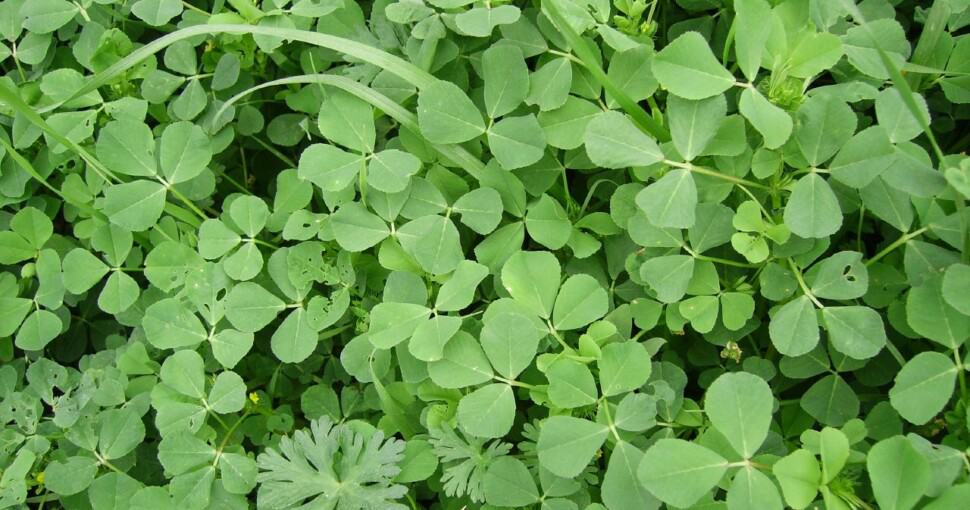Clover is loved, used, or seen as a lawn pest. The reaction depends on the degree of horticultural insights one has. Clover’s role as a nitrogen activator stands out for those who know. Clover is also a high-protein livestock forage crop. And farmers plow Clover back into fields as a green manure soil fertilizer. Many gardeners do the same.
Contents
Clover is best on farms and in urban gardens for crops and helps the environment. The reaction is a turnaround after chemical weed killers targeted Clover for over 70 years. Now farmers and garden enthusiasts no longer see Clover as a threat, especially its role in releasing nitrogen in the soil. Growing Clover changes the earth’s soil, and Clover mulching stops weed growth.
Clover, or white Clover, is a herbaceous plant botanically known as Trifolium repense (referring to ‘three’ and ‘creeping’). Clover is of the bean family Fabaceae (or Leguminosae) with benefits to enriching the soil it grows in, is livestock feed, and floral nectar for bees, butterflies, and moths. Clover also contains the genus Rhizobium in its plant roots to convert nitrogen from the air.
The clover genus has about 255 species, and it often takes work to tell a true one with many clover lookalikes. Mostly these lookalike species share the same leaf structure.
1. Shamrock
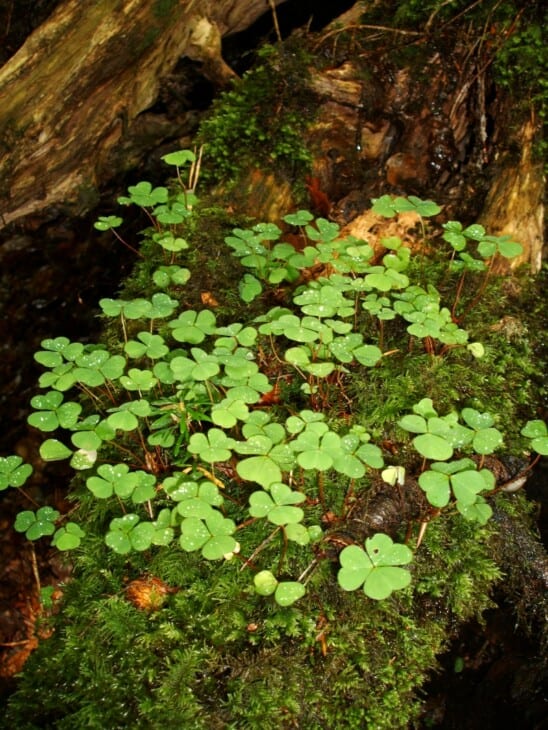
As a lookalike clover plant, the shamrock is not identical. However, botanists and plant historians say the shamrock should be classed as a clover. The shamrock is tagged as a Trifolium pratense or Trifolium pratense flore albo, which means a red or white clover. It’s known as a ‘lesser clover,’ though. The verdict, however, is still out as the shamrock comes in as a close clover contender.
In England, the shamrock is known as a three-leafed grass; in Ireland, the plant’s symbolism is associated with the patron St Patrick. Young shamrock sprigs and three leaves have the legendary significance of faith, hope, and love. Botanically the shamrock fits the labels of Trifolium dubium and Trifolium repens.
Many botanists compare the shamrock to varieties of wood sorrel (Oxalis) or medic (Medicago), which also look like Clover. Similarities between a clover leaf and a shamrock are the plants’ trifoliate leaves.
The flowers of each differ. Clover has round-headed, almost spiky, flowers of varying colors. You can find white, pink, red, and even yellow flowers, and shamrock has white and sometimes pink ones.
But the most distinct difference between clovers and shamrock is that clovers can have more than three petals.
2. Black Medic (Medicago lupulina)
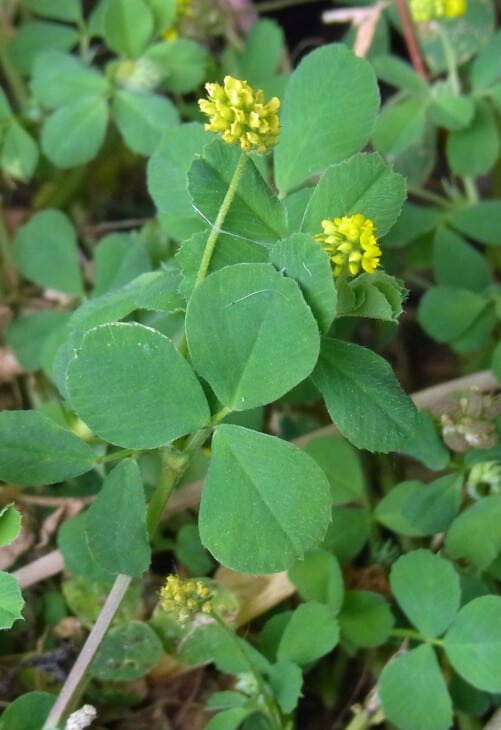
Medicago lupulina is a sprawling clover plant that’s part of the clover family and is known as a Black Medic or hop clover. The Medic is found in dry grasslands and can be confused with a genuine clover. The Clover lookalike Medic has three small leaves with tiny yellow flowers that grow in a clump. The Medic is hairy along its stems and along the veins on the leaves.
The Medic has delicate stems and three oval-shaped hairy leaves with serrated edges towards the top of the leaves. Clover leaflets have tiny serrations on the edge of the plant. In addition, the Medic is similar to the Clover, with nodules on the plant’s roots to aid nitrogen-fixing bacteria.
The Trifolium repense clover is trifoliate, which makes it easy to identify. The three leaflets are petal-shaped and have a distinctive white mark on each leaf which botanists say is ‘v-shaped’ or like a crescent. The leaves on Clovers are smaller, about half the size of the Black Medic. The leaves are also slightly serrated.
Clover is low-growing, except when stems branch off and stand up to a foot high. The blooms or flowers are the tell-tale differences, with Clover having ball-shaped white and pinkish clusters. The roots on both are similar in that the plants sprawl out.
3. Suckling Clover (Trifolium dubium)
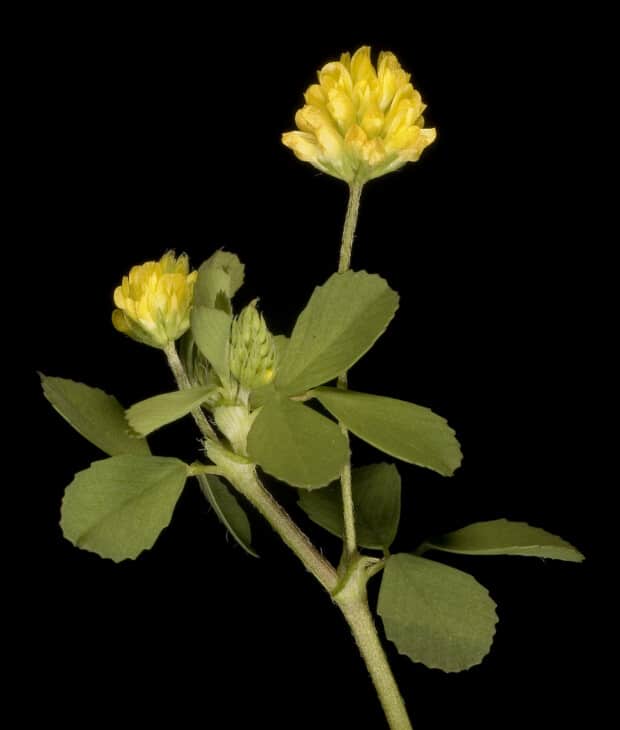
Trifolium dubium, nicknamed the Suckling Clover, is often referred to as a lesser trefoil. The Suckling Clover is part of the clover family Fabaceae but doesn’t have Trifolium repense’s distinctive leaflets or patterning. The Suckling Clover can be mistaken for a Clover at a distance and growing in a field. It is a sprawling plant like Clover; however, its leaves are more like that of a Shamrock.
It’s less easy to confuse Trifolium dubium for Trifolium repense (White Clover) when these are blooming. The pale yellow flowers on Trifolium dubium, the Suckling Clover, are unlike the white clusters of Trifolium repense.
In addition, the leaves on the Suckling Clover are pretty distinctive. The leaves are haired on the underside along the leaf’s central vein. There also are hairs at the end of the central vein. This is not the case with the Trifolium repense (white Clover) with petal-shaped leaves that aren’t always hairy.
But that it’s hard to distinguish between these lookalikes is no exaggeration.
4. Yellowwood Sorrel (Oxalis stricta)
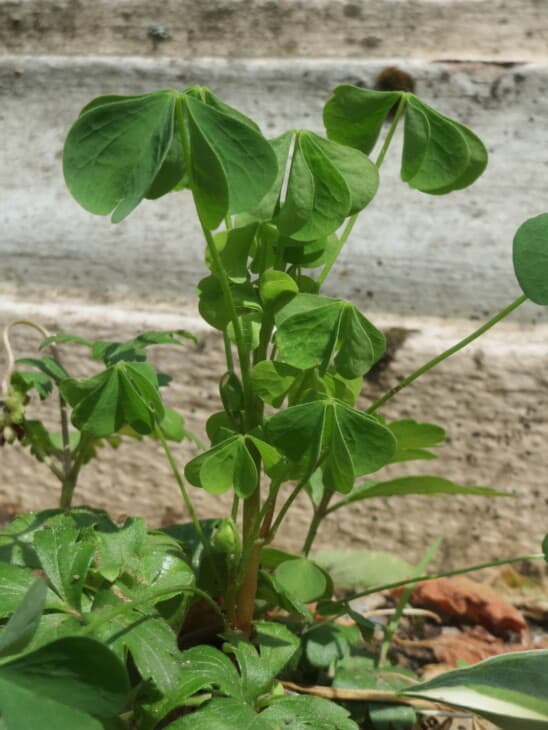
Oxalis stricta is commonly known as Yellowwood Sorrel and, when growing wild, can be mistaken for Clover. The Yellowwood Sorrel has three compound clover-like leaves that radiate from a central point on the plant stems. The Yellowwood Sorrel leaves are like that of the White Clover. Both plants have green trifoliate leaves.
The White Clover leaves can only be distinguished from the Yellowwood Sorrel on close inspection. Both have heart-shaped leaves. But the White Clover leaves have a distinctive white ‘v’ shape on the lower end of their heart-shaped leaves. The sorrel doesn’t have this marking.
The leaves are heart-shaped on the White Clover and the Yellowwood sorrel. The sorrel leaf structure is a compound like that of Clover, and both these plants have three leaves that radiate from a central spot on the plant stem.
But Clover leaves aren’t all the same leaf shapes. The shapes differ vastly, with Red Clover’s trifoliate leaves as elliptical. Other trifoliate clovers have tear-dropped or rounded leaves. The leaves on these plants can make them appear the same. But looking at the leaves only, it’s easy to mistake the two plants.
Usually, it takes a bit of a closer look to see white Clover’s distinctive white ‘v’ shape. This is not a characteristic of the Yellowwood sorrel. Also, besides the shape of the leaves, the Yellowwood sorrel has a pivotal characteristic to tell the plants apart. A fold in its center is typical of the Yellowwood sorrel which allows the leaves to close at night and open up at daybreak.
Another way to tell a Yellowwood sorrel from a White Clover is when these are flowering. When Yellow wood sorrel isn’t in flower, the trifoliate leaves on the plant are like that of white Clover. Also, the yellowwood sorrel and the white Clover differ when in flower.
The yellowwood sorrel’s flower is yellow with five small petals. The flowers differ from the white Clover’s distinctive ball-like cluster of small white flowers. The yellowwood sorrel is a definite clover lookalike outside the flowering season.
Other ways to tell the plants apart are that the yellowwood sorrel’s stems have a sour taste, unlike the sweeter flavors of most clovers. Yellowwood sorrel is known as sourgrass, and it’s common to hear it called lemon clover because of the leaf resemblances between this sorrel and the white petal-shaped Clover.
5. Four-leaf Clover
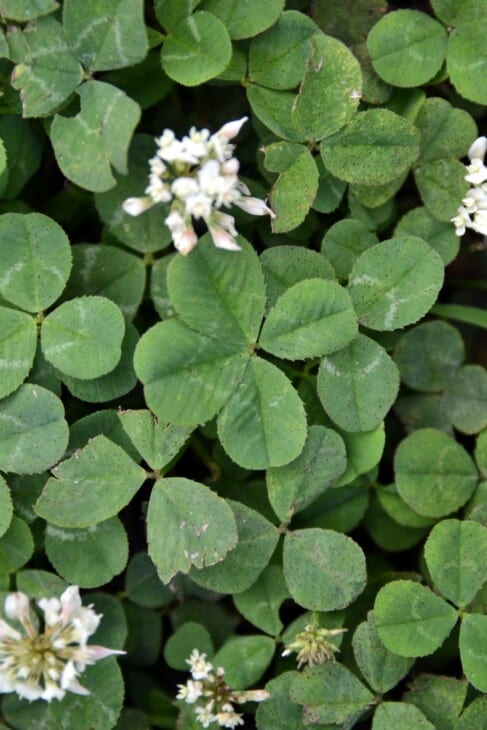
The four-leaf Clover is common to the three-leaf clover varieties. At the same time, though a four-leaf clover is a relative rarity, finding clovers with more leaves is possible. Finding a clover with five or more leaves is rare, though.
Keep your eyes open if you’re looking for a lucky clover that’s more than just a lookalike. You get clovers with not just three compound leaflets attached to a center. An age-old symbol of good luck is a lookalike clover with four leaves. These four-leaf clovers are common among many trifoliate clovers.
Did you know that one in 5 000 clovers has four leaflets? Botanists came up with this finding when they looked at about 7 million clovers across the continents. This continues a train of wishful thinking associated with four-leaf clovers. Four-leaf clovers are the closest lookalikes of clovers.
6. Iron Cross (Oxalis tetraphylla)
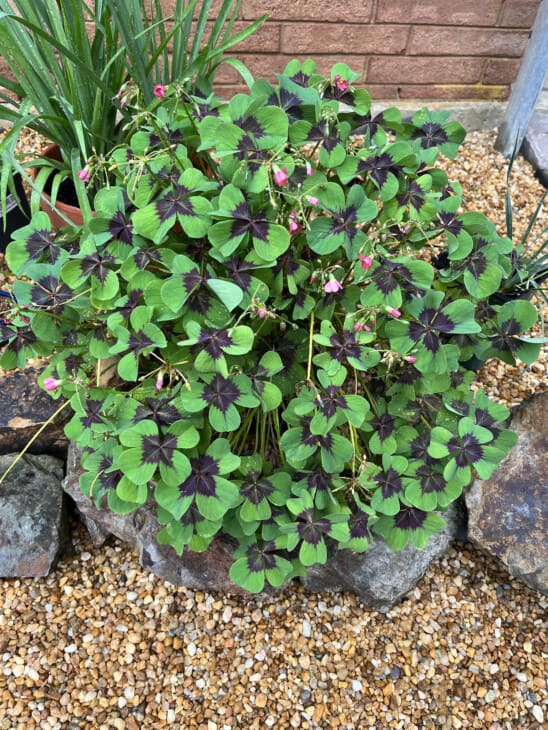
Clovers have a fair share of good luck, and you can be in luck to find an Iron Cross (Oxalis tetraphylla), nicknamed a good luck plant. The Iron Cross has foliage like a Clover, and it’s not uncommon to mistake this plant for a Clover.
Anyone who has seen an Iron Cross is amazed as this clover-like plant has a dark purple spot at the center of four compound leaves. The base of each leaf carries a dark marking that narrows towards the plant stem. The spot’s location at the center of a four-leaf clover-like structure makes up a cross.
Another stand-out feature of this lookalike clover with its magical center is that the leaves actually fold closed at night. Like another clover lookalike, the Yellowwood sorrel, the leaves again open at dawn.
As much as the Iron Cross resembles the Clover, this plant also differs. The Iron Cross flowers are unlike the Clovers’ ball-shaped white ones. The Iron Cross has bright pink trumpet-like flowers. If you were to look at the flowers only, you might not notice the resemblances that the Iron Cross and the Clover share.
7. Red Clover (Trifolium pratense)
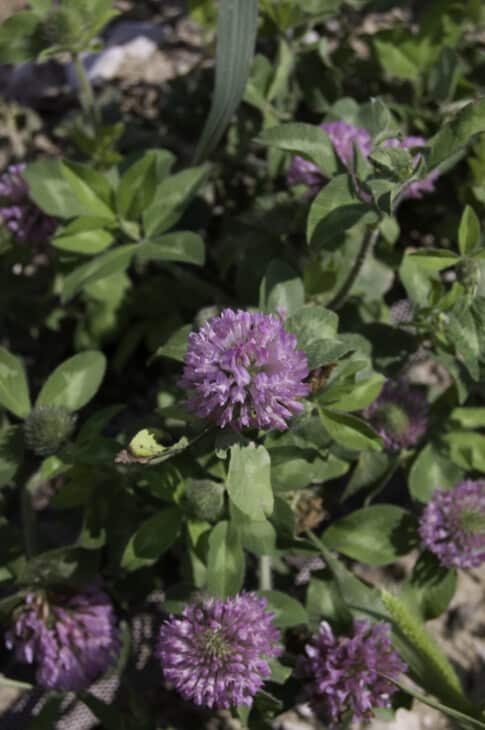
Red Clover (Trifolium pratense) looks like the White Clover when not in bloom and when looked at from afar. However, the White Clover has heart-shaped leaves, and the leaves on the Red Clover are oblong. The leaves, however, have a similar marking in the shape of a ‘v’ on the plant leaves.
The leaves of the White Clover are smooth, like that of the lookalike Red Clover. Both these Clovers have no hairs on their leaves which make the plants alike. But there are differences.
Commonly the Red Clover is bushier and taller than the White Clover. The White Clover grows close to the ground, but occasionally it can be seen to branch off and grow upwards. White Clover can grow about a foot off the ground. Red Clover is a lookalike plant of the upright White Clover, especially for the untrained eye. But Red Clover is known as an upright grower.
There are other differences too. Though Red Clover is a White Clover lookalike, it’s pretty easy to tell the plants apart when flowering. Red Clover has a distinct cluster of bright pink-red flowers in contrast to White Clover’s ball of white flowers.

